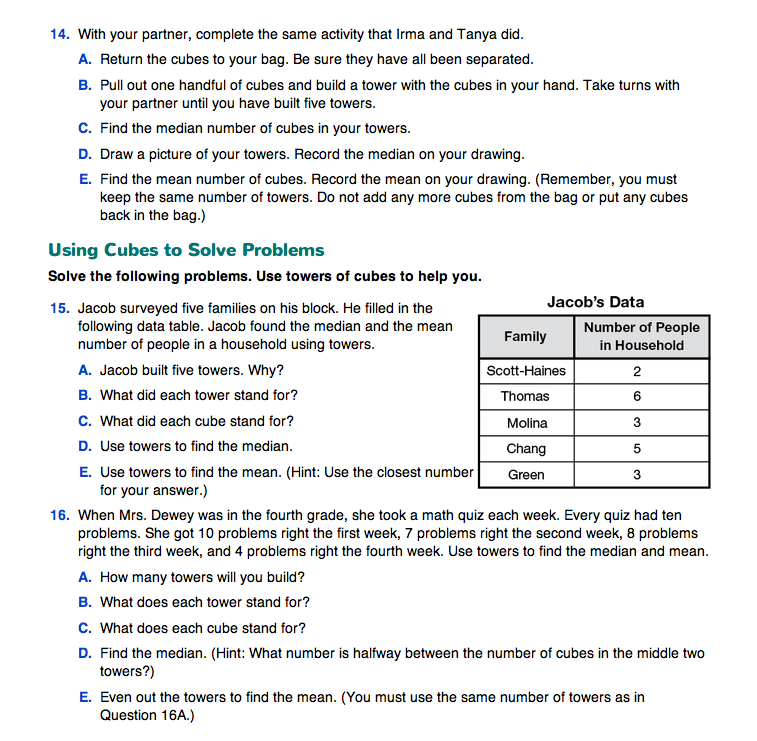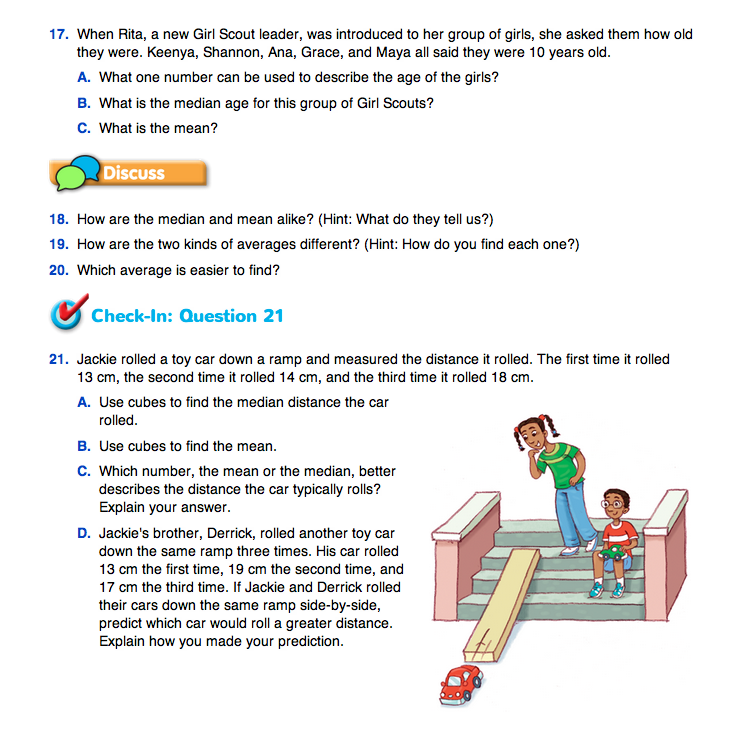Another Average Activity
Est. Class Sessions: 2Developing the Lesson
Part 2. Using Cubes to Solve Problems
In this part of the activity, pairs of students will use connecting cubes to answer Questions 15–21. Question 15 asks for the median and mean number of people in five households.
As students build the five towers, ask:
When they find the median and the mean, remind the class that both types of averages can be used to represent a typical household on Jacob's block.
Question 16 asks students to find the median and mean of four quiz scores. Finding the median of an even number of scores will be a new problem since there is no score that is the middle. In this case there are two middle towers—one with seven cubes and one with eight cubes. Since 71/2 is exactly halfway between the two, 71/2 is the median. See the discussion in Unit 1 Lesson 3.
To find the mean number of scores, students will again “even out” the towers. In this case they will have three towers of seven cubes each and one tower of eight cubes.
Ask:
Question 17 may seem tricky to students, since all the numbers to be averaged are the same. However, if they understand that an average is one number that can be used to describe a set of numbers, then they will see that the median and mean age of five ten-year-olds is ten. If students are skeptical, have them build the 5 towers of ten each and line them up.













